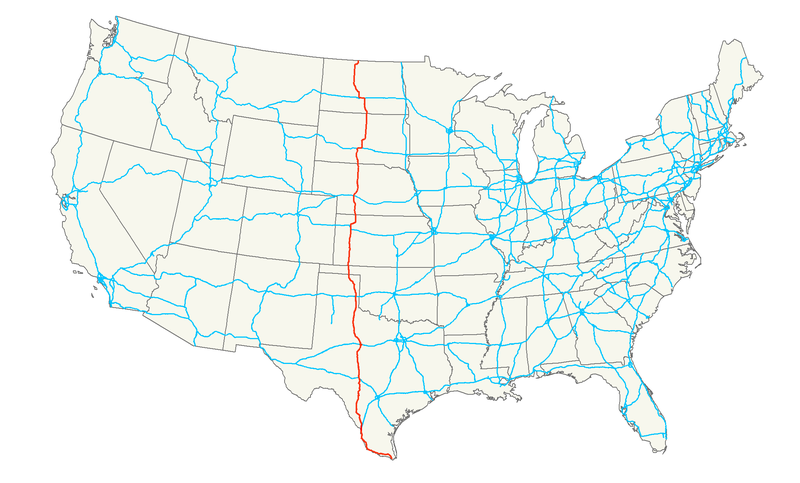
A feasibility study is being conducted for a robot truck corridor that would run from Mexico City to Alaska, mostly along the existing US Interstate 83, the superhighway that essentially bisects the country.
The plan being promoted by the Central North American Trade Corridor Association (CNATCA) would consist of a dedicated superhighway that could be used exclusively by freight trucks, many — if not all of them — driverless.
Driverless Trucks Already Exist
The technology already exists. Freightliner recently introduced an 18-wheeler built by Daimler that operate without the use of a human driver.
Like the driverless cars currently being developed by Google, Mercedes-Benz, and other companies, the vehicle relies on GPS, radar, and the Internet to navigate its way between destinations safely and efficiently.
The benefit of the driverless robot truck superhighway would be that it could haul and deliver products faster, cheaper and more efficiently than the current system of using trucks driven by humans on roads they share with cars.
No Drivers, Fewer Regulations
The proposal could offer a solution to the current shortage of qualified truck drivers, as well as the trucking industry’s fight against increasing federal regulations regarding how long human drivers can stay behind the wheel before they need rest break. Driverless trucks wouldn’t have to face time restrictions.
They also wouldn’t have to stop at border crossings, according to the CNATCA proposal. The vehicles could be checked and tracked electronically as they travel across the course of the 1,800-mile stretch of the route that passes through the US between Brownsville, Texas, and Westhope, North Dakota.
US 83 current runs through Texas, Oklahoma, Kansas, Nebraska, South Dakota and North Dakota. The proposed trucks-only highway would continue through Canada into Alaska and go all the way south to Mexico City.
It’s not immediately clear whether the new highway would run parallel to the existing interstate or whether cars and manned trucks would no longer be admitted on the road. The latter seems impractical as the route is the region’s major north/south connector.
Facilitates Expansion of Oil Production
The primary motivation for the proposed route is oil.
Currently, a lot of oil is being extracted from the sand fields of North Dakota and western Canada. But getting it to refineries in Oklahoma and Texas isn’t easy or cheap.
Railroads can barely keep up with oil capacity as it is, let alone projected expansion of the oil fields. Plus, there is growing resistance among municipalities along rail lines to allowing potentially highly explosive train tanker cars from rolling through their towns.
Idea Gaining Momentum
CNATCA officials first introduced the idea of the robot truck superhighway during the 2014 Trade & Transportation Summit, in Bismarck, South Dakota. And the idea seems to be gaining speed. In addition to the feasibility study, meetings are now being scheduled in communities along the six-state route so that the public can give their feedback to the idea.
Self-driving vehicles are an inevitable technology. Some robotic vehicles already are being used by the US military.
Many of the major automakers, in addition to companies like Uber and Google, are reportedly developing concept cars that could drive themselves. Once they become widely used, the number of traffic accidents could decrease to close to zero.

